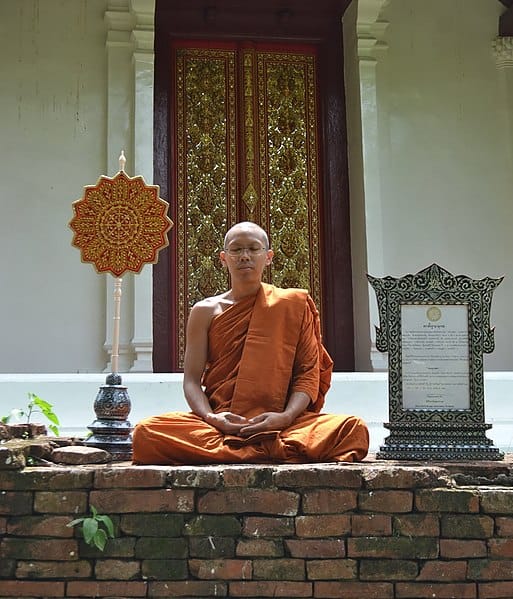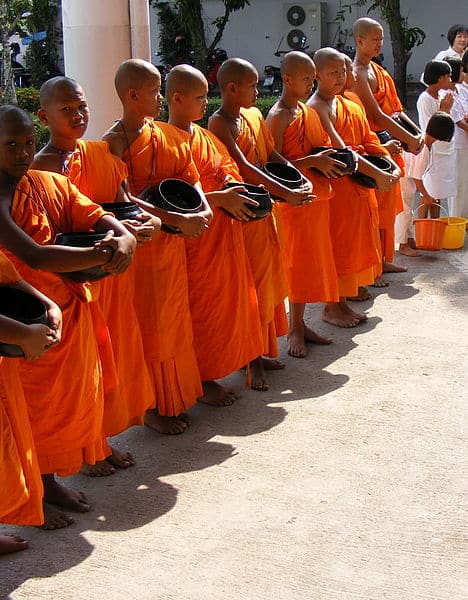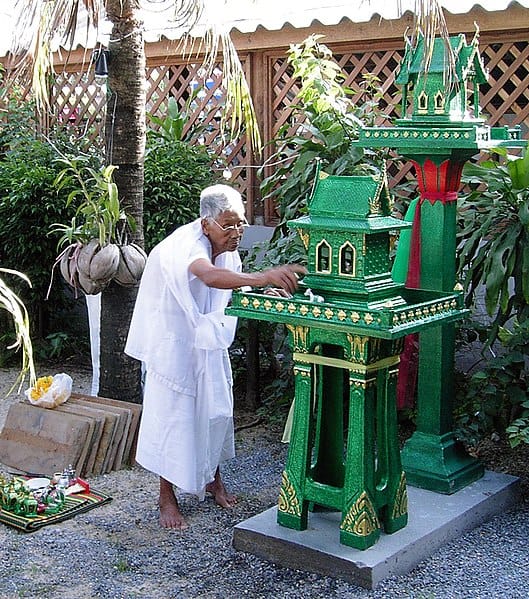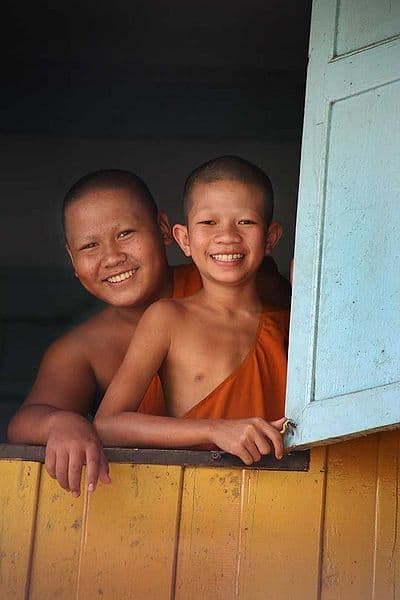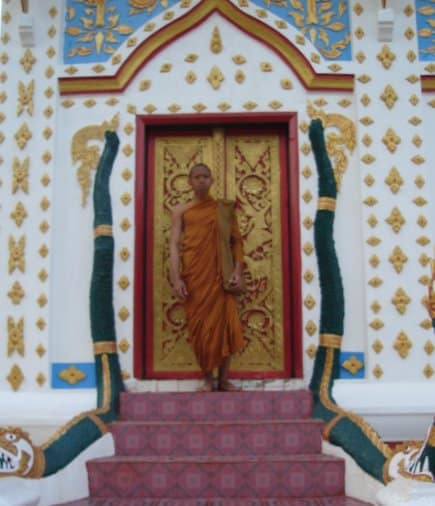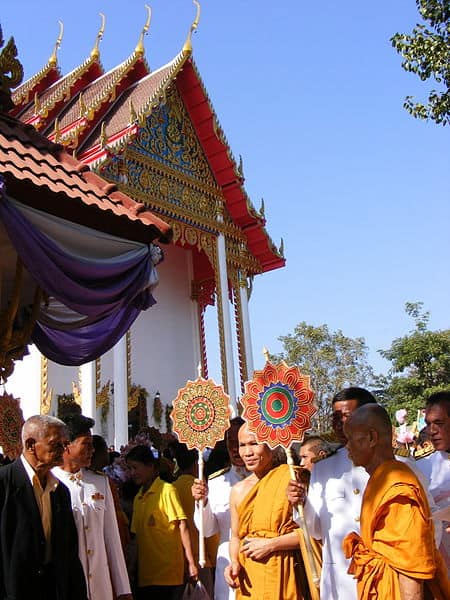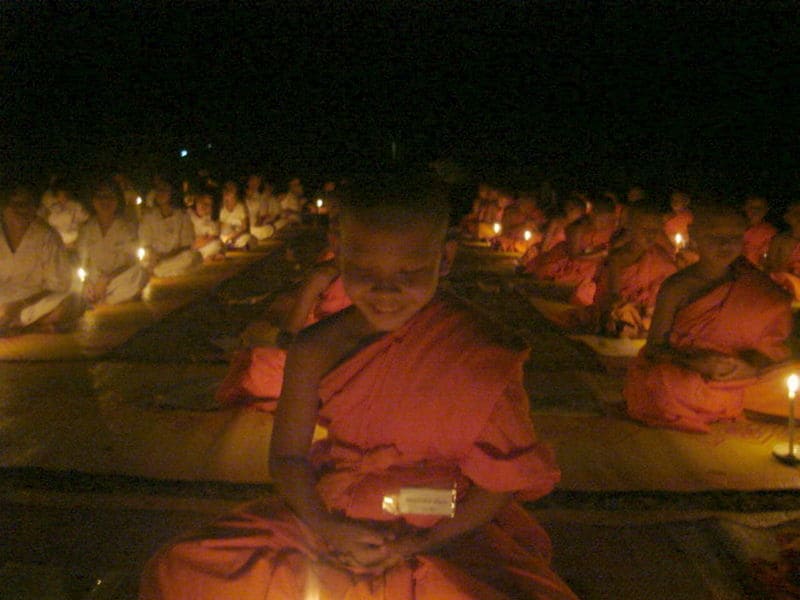A brief guide to Buddhism and Monkhood in Thailand
Many of these aspects turn out to be unexpectedly black-and-white, while others – Thai Buddhism being one of them – tend to be quite a bit more on the ‘grey area’ side of things, especially to outsiders.
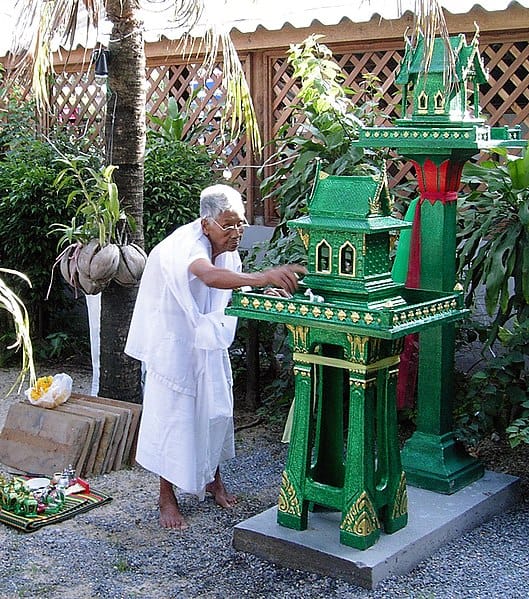
Thailand is one of those strangely exotic, far-off places that has always attracted certain types of intrepid explorers and visitors who want to investigate more deeply some of the cultural aspects of the country.
With the growing interest in Buddhism in the western world that has been slowly gaining momentum for decades — especially with those looking for a completely different take on religion and spirituality to what is on offer in their homeland — many people have ventured to Thailand to either take in the amazing architecture of some of the most ancient Buddhist temples in the world, or even to ordain as a monk (which is allowed even for very short periods in this country).
They may do this to get further insights into the culture and philosophy of Buddhism a bit closer to its point of origin, or they may do this to get deeper cultural insights into not only Buddhism, but also the culture of Thailand.
Thailand certainly has its own particular approach to this ancient spiritual path, which has played a huge role in shaping the culture of the nation, a fact that is almost immediately evident to anyone walking around Bangkok from the numerous shrines and Buddha images inherent around the city.
Quite a few Westerners with a bit more than a passing interest in the SE Asian religion of Buddhism even go so far as to ordain as ‘forest monks’ – a tradition that has been going on since the early 70s, with many (now well-known) spiritual seekers from the west having lived and practiced as monks out in the North-Eastern countryside where the tradition still exists in many temples, particularly those with renowned teachers (such as the much-loved, now deceased Ajahn Cha).
Thai Buddhism is unique in some ways to this SE Asian region (which encompasses Laos, Cambodia, Myanmar, and also Sri Lanka, all of which have similar approaches to Thailand albeit in the Theravada vein) and it is so prominent in Thailand that there are more than 35,000 temples!
For the uninitiated, there are 2 main ‘types’ of Buddhism inherent in today’s world – Theravada and Mahayana – with the former being the first, original inception of the religion which aimed to record, catalogue and study the words and principles of the Buddha (even though all teachings were originally transmitted verbally at the Buddha’s request).
The latter, however, is a later, modified version that gained popularity first in other parts of Asia, and then the world.
Thai Buddhism is a somewhat unique slant on the Theravada philosophy, which is influenced by a variety of factors unheard of in many other Buddhist practices or countries (except for the aforementioned nations bordering Thailand).
Some of these additional factors are related to Hinduism and its gods and mythology, shrines to which can be seen all around not only the temples, but also the streets and cities of Thailand. In Hinduism these ‘gods’ are all considered to be different aspects of The One (God), and it is the habit of many Thais to ‘make merit’ by leaving offerings of incense, food, and prayers in the hope of good fortune coming their way.
There is also the ancient culture of animism (spirit worship) which is more closely-related to Thai ‘Buddhist’ practices than many other aspects of the religion, a fact apparent from all of the ‘spirit houses’ located in prominent spots outside of just about every premises in the country (or at least for those who can afford them).
Moneyed Thais will spare no expense when it comes to choosing one of these structures, believing the more grand the spirit house, the better protection they will receive from the spirits, as well as gaining more prosperity in their lives!
Ordaining as a monk
There are around 300,000 monks in Thailand, although at one time ALL males became Buddhist monks for at least a short duration, usually before the age of 20.
This tradition has slid significantly in recent decades, however, with now much smaller numbers of young Thai males ordaining for just 2 weeks, usually over the Thai Buddhist Lent period. Many of them do this to please their mothers who, in times gone by, all expected their sons to become monks at some point in time, even if it was only temporary.
Women looking for husbands have also traditionally considered that males who have already ordained as monks, even for short periods, are more ‘ripe’ and hence suitable for committing to relationships and family.
There have always been foreigners willing to head out to Thailand in the hope of discovering some lost, ancient, mystical aspect of the religion of Buddhism in some exotic-sounding far-flung region of the country.
Which all sounds admittedly exotic and potentially life-defining.
Their hopes are quite often misplaced though, as Thailand in reality is actually much less mystical than some people may tend to believe. What you get here as a monk is straight-ahead, day-long study of scriptures, and minor chores to attend to after rising at 4 am and eating just one meal per day from food that has been donated by locals wishing to make merit. This is no holiday.
So for anyone interested in Buddhism, or even monkhood in Thailand, we have prepared this brief guide that may provide a few useful considerations for anyone thinking of coming out here to ordain.
Or it may just pique the interest a little more of those who were wondering about Thai Buddhism, and perhaps help to fill in a few gaps. So here we go with a brief guide to Buddhism and monkhood in Thailand. Aum.
There is a ‘Monkhood Season’
This is a time that occurs during the rainy season in Thailand, which commonly lasts from around July to October, lasting 3 months.
For hardcore monks, this time is known as the ‘rains retreat’ when they go deeper into study and meditation lasting the whole day, and they are rarely seen outside of the temples during this time.
Anyone (male) can be ordained as a monk in Thailand, including foreigners (this being one of the few Thai laws that favours foreigners in any way). Anyone willing to commit to monkhood has to present themselves at the temple of their choice along with their robes and a few other essentials such as a pillow, a bowl and a razor (although actually there is no short supply of any of these items due to donations from locals.
The life of a monk is no holiday
Although it is no real secret in Thailand that many (Thai) males join the monkhood looking for an ‘easy ride’ by way of free board and lodging without having to work, the life of a monk can actually be quite arduous at times.
Meditation and chanting begins before dawn, then the monks take their bowls and go into the local neighbourhood on their alms rounds.
They usually have their one meal of the day at around 11 am, comprised of the food donated by locals.
In the afternoon the monks have lists of duties to perform in and around the temple, and then by late afternoon there are more ceremonies to attend followed by study of scriptures and homework. The majority of monks will be out for the count by 9 pm.
A monk cannot touch or sit next to a female
One of the reasons why you may see signs on public transport detailing a particular seat that should be given up for monks is exactly this. Never ones to allow temptation to be put before the hearts and minds of the general population, the Thais believe this to be strict etiquette that must be observed by both monks and laypeople alike.
Nor is a woman allowed to walk ahead of a monk, only behind, and this detail extends even to his mother!
You can stay forever of quit tomorrow
With the exception of the 3-month Buddhist lent period already mentioned, monks in Thailand are actually free to leave and return home at anytime, which is actually a frequent occurrence for anyone unable to stay the course.
Those who want to commit fully, however, have a bed for life, so to speak, and can go on to specialise in particular areas of the philosophy such as scriptures or meditation.
Corruption is evident even in temples
Although it is largely unexpected and widely-condemned in the country, the culture of corruption which has had the nation in its grip forever has even been known to extend to temple life.
The Thai media frequently reports on issues such as fraud, sexual assault, gambling, drug use, or even extravagant lifestyles all courtesy of the funds donated by locals.
Temples in Thailand receive massive amounts of money in donations every year (estimated as being somewhere in the region of more than 3 billion (untraceable) dollars!
There have been a few stories in recent years of high-ranking monks flying around in their own jet planes, and sometimes absconding and disappearing altogether!
There are many Buddhist-related holidays
Thailand definitely has its fair share of public and national holidays throughout the year, and quite a few of them are related to notable events in The Buddha’s life and other events, holidays and festivals traditionally-related to the history and development of Buddhism.
Much to the chagrin of many would-be-revellers from afar, strict ‘no alcohol sales’ rules are imposed on any of these holidays, so any big-time drinkers visiting Thailand might want to consider stocking up a few days before any of these holidays occur or they are likely to encounter a ‘mai dai, ka’ (cannot/not allowed) when they get to checkout.
Makha Bucha Day
This is held in February or March (on a full moon day of the 3rd lunar month as the traditional Thai calender is a lunar one) and is one of Thailand’s main Buddhist holidays.
The day commemorates the coming together of 1,250 enlightened disciples of Buddha to listen to his core teachings. All of the monks present at this gathering were ordained by the Buddha himself, and today Buddhists go to make merit and join candlelight processions for the festival known as “Wian Tian”, a key component of this day
Makha Bucha is a day when ‘lay’ Buddhists make extra efforts to observe the 5 precepts of Buddhism which include no alcohol or other intoxicants, and some temples organise mass meditations where the attendees all wear white and observe the precepts, which is likely to be the case for many Thais with the other following important days in the Buddhist calender.
Visakha Bucha Day
This is another notable day on the Buddhist calender. It occurs in May or June and represents the 3 major events that occurred in the life of The Buddha, namely his birth, enlightenment and passing into Nirvana.
As with the majority of Buddhist holidays and festivals in Thailand, there is much ceremony, ritual, and merit-making involved at the temples.
Asahna Bucha Day (also known as Dharma Day)
This particular day is held in July or August (again depending on the waxing and waning of the moon – it should be the first full moon of the eighth lunar month).
It commemorates the Buddha’s first sermon to his first five disciples at Benares in India, over 2,500 years ago. This sermon formed the first part of what was later to become Buddhist doctrine referred to as ‘Dharma’.
This time is also the beginning of the Buddhist lent period, and the day after is actually another highly significant day on the Buddhist calender as it marks the beginning of the 3-month lent period known as ‘Khao Pansa’, or the ‘rains retreat’.
Planning a trip to Paris ? Get ready !
These are Amazon’s best-selling travel products that you may need for coming to Paris.
Bookstore
- The best travel book : Rick Steves – Paris 2023 – Learn more here
- Fodor’s Paris 2024 – Learn more here
Travel Gear
- Venture Pal Lightweight Backpack – Learn more here
- Samsonite Winfield 2 28″ Luggage – Learn more here
- Swig Savvy’s Stainless Steel Insulated Water Bottle – Learn more here
Check Amazon’s best-seller list for the most popular travel accessories. We sometimes read this list just to find out what new travel products people are buying.




